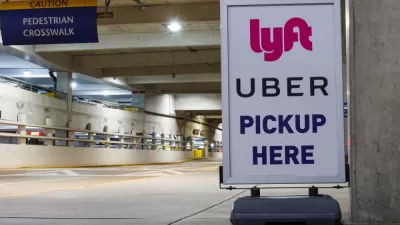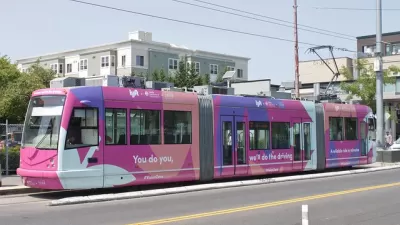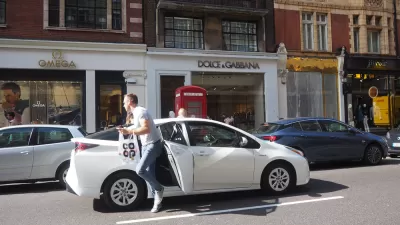Ridehailing companies saw a steep drop in ridership in the city during the pandemic, followed by a slow recovery as their prices increase and demand slows.

Ridehailing companies in Seattle are seeing a slower recovery than in other cities, reports Doug Trumm for The Urbanist. While other parts of the country saw ridehailing grow as an alternative to public transit during the pandemic, Seattle ridership continues to lag compared to pre-pandemic ride volumes. While Seattle ridership for Uber and Lyft hovers at 39 percent compared to 2019, “The companies claim to be at about 70% of normal ridership in most other metropolitan regions.” By contrast, public transit ridership is recovering more quickly. “In April, [King County] Metro ridership clocked in at 49% of its 2019 level.”
Experts attribute the lackluster performance of ridehailing companies to reduced demand and wages that are still too low in a labor market where workers wield more power. “Uber and Lyft have jacked up prices significantly, but most of that is not being passed along to drivers. Instead, the companies are keeping more for themselves in an increasingly desperate attempt to finally turn a profit after a decade of loss-leading growth with little abandon.”
Trumm points to previous arguments made in The Urbanist that “the ridehailing business model appears flawed on a fundamental level for a number of reasons,” including the high cost of car ownership and the failure of the business model to turn a profit as it scaled up. Now, with remote work available to a large percentage of Seattle-area workers, the demand for high-priced ridehailing is even lower.
The article expresses optimism that the slow revitalization of the ridehailing industry may shift more travelers to public transit, but that depends on the ability of public transit to effectively serve Seattleites. “Things like faster and more reliable transit come to mind,” writes Trumm, but notes that transit improvements in the region took a hit from the pandemic as well.
FULL STORY: Ridehailing Sees Bigger Ridership Dip than Transit in Seattle

Trump Administration Could Effectively End Housing Voucher Program
Federal officials are eyeing major cuts to the Section 8 program that helps millions of low-income households pay rent.

Planetizen Federal Action Tracker
A weekly monitor of how Trump’s orders and actions are impacting planners and planning in America.

Ken Jennings Launches Transit Web Series
The Jeopardy champ wants you to ride public transit.

Philadelphia Is Expanding its Network of Roundabouts
Roundabouts are widely shown to decrease traffic speed, reduce congestion, and improve efficiency.

Why Bike Lanes Are Good: An Explainer for the US Transportation Secretary
Sean Duffy says there’s no evidence that bike lanes have benefits. Streetsblog — and federal agencies’ own data — beg to differ.

California Invests Additional $5M in Electric School Buses
The state wants to electrify all of its school bus fleets by 2035.
Urban Design for Planners 1: Software Tools
This six-course series explores essential urban design concepts using open source software and equips planners with the tools they need to participate fully in the urban design process.
Planning for Universal Design
Learn the tools for implementing Universal Design in planning regulations.
Ada County Highway District
Clanton & Associates, Inc.
Jessamine County Fiscal Court
Institute for Housing and Urban Development Studies (IHS)
City of Grandview
Harvard GSD Executive Education
Toledo-Lucas County Plan Commissions
Salt Lake City
NYU Wagner Graduate School of Public Service





























